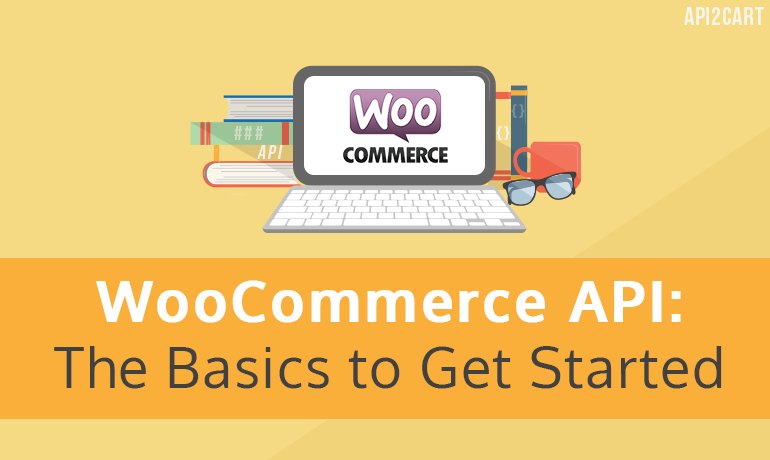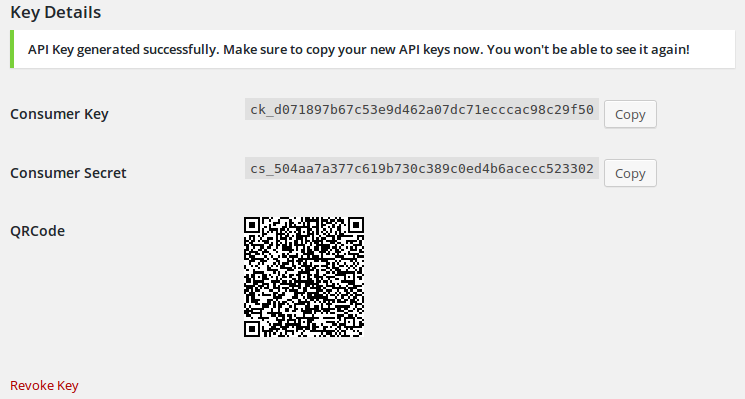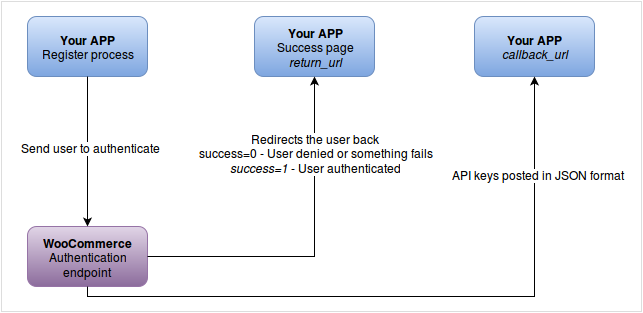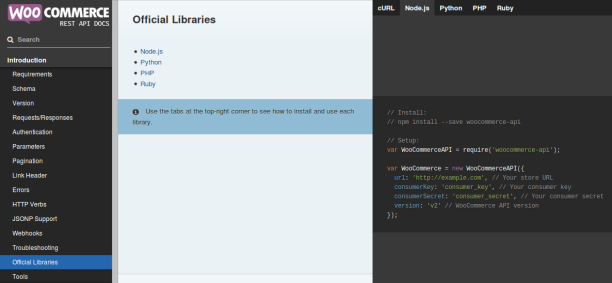Many WordPress-based e-commerce websites use WooCommerce as their platforms. For developers, knowing about WooCommerce API is important to create better user experience. If you are a developer working with version 2.1 and beyond, you can use an API system called Representational State Transfer (REST) API. It will help you create apps and tools with less restriction.

The new WooCommerce version allows developers to create e-commerce websites that are more suitable for unique marketers. While the new API may sound overwhelming, applying it in e-commerce websites will create a better experience, both for owners and visitors.
REST API Definition and Function
A website has “solutions” in its system to make various functions work, and these solutions must work together to create a whole user experience (think about commands such as “Purchase,” “Order” “Add to Cart,” and such). REST API refers to the interoperability between these solutions, customized to cater for different functions based on the websites’ designs.
Developers can use REST API to create thousands of specific programs, without eating up data storage in WordPress system. The system also enables users to get the same experience when exploring website with mobile gadgets. Since WooCommerce enables REST API endpoints, developers can work on WordPress-based websites using these benefits.

If you are a developer, applying WooCommerce REST API endpoints on WordPress-based e-commerce websites will help you creating a fully-functioned web page, no matter the requirements or requests. This website will also work well on various gadgets and external applications.
4 Steps to Start with WooCommerce REST API
To apply REST API into the system, developers must connect the command line interface with it, whether they work with Mac, Windows, or Linux. From there, developers can build interaction based on the specific applications used on the website.
Assuming the WordPress-based website is already integrated with WooCommerce, here are the four initial steps you must do:
Permission and installation.
Applying REST API in WooCommerce means, you need to get permission through the authentication process. The new version of WooCommerce creates specific Secret Key and Consumer Key as your REST API keywords. Each key consists of a string of characters, which appear in random orders for every user.
To get the keywords, start by enabling REST API in the Setting page of WordPress’ WooCommerce dashboard. After saving the option, choose Keys/Apps and create your keyword details. Follow the prompts until you fill all the columns. Click Generate API Key button, and you are all set.

Learning the application’s REST API documentation.
WooCommerce has a special documentation page that gives information about all REST API calls for each application. Since your applications are different in functions, each of them has unique REST API call. You can also get instructions to deal with the specific situation, instead of memorizing all the endpoints of the REST API.
In this page, developers will get basic information they need to further work with WooCommerce REST API. There is information about data transfer, system requirements, tools and applications, error debugging, and troubleshooting.
In this step, developers should create an experiment website, where they can practice with various commands based on the REST API.
Integration.
An intricate website is likely to use various applications, even the ones that are not related to WooCommerce and WordPress. REST API enables developers to connect with such applications, creating sophisticated e-commerce websites based on specific needs of the business owners. The integration process also includes the ability to create a mobile app that works as well as the PC version.
You can check the result of your design by using React Native program. It allows you to create a mobile version of the e-commerce website. You can later syndicate all the tools and products from the WooCommerce platform to one catalog. Don’t forget to sync data and test beta version before creating the mobile version.
Testing.

Once everything is in place, you can test if all the steps are done correctly. You can try using a simple command URL from one of the functions (order, purchase, and such). Create a URL code depending on the type of website used as a platform. Use the two keys for basic authorization function.
If everything works well, you should see JSON response in the form of a long list. This means that the system integration process works well, and the WordPress-based website is ready to use and modify.
Since WooCommerce is popular among e-commerce website owners, the REST API resources have five endpoints that refer to different functions: Customers, Products, Orders, Coupons, and Reports. These functions become the basis for various complicated commands and operations in the website, such as Shipping Rates, Taxes, Shipping Zones, and much more.
Common Troubleshoots for WooCommerce REST API
When you find connection problems, there are several troubleshoots to try. The most common solution is to disable the SSL certificate verification, which prevents connection between the local website hosting and REST API. You can also add client certificates to render the connection possible. These two solutions are available in the Settings page, under General and Certificates.
Another common connection problem is the presence of “401 Unauthorized” page. The solution is to check whether all the username, password, and REST API keys are matched. Everything must be matched during the authentication step. If the page still appears, try creating the new REST API keys as described in the first step, and repeat the process.
There is also the possible presence of “Consumer Key is missing” notification. It usually happens when the server you use has troubles authenticating the connection. Even if your keys are right, the connection will not happen. You can try using query string parameters instead of the usual Consumer Key characters.
Conclusion
The new version of WooCommerce platform enables developers to work with REST API, integrating various apps and tools that are not WordPress-based into the website. Using three main steps to start the integration process, developers can create various commands for all the website’s functions, including in the mobile version.
Having a perfect website based on specific needs is important for e-commerce website owners. Integrating WooCommerce API system is a way to create better user experiences in e-commerce websites, and generating more profits.